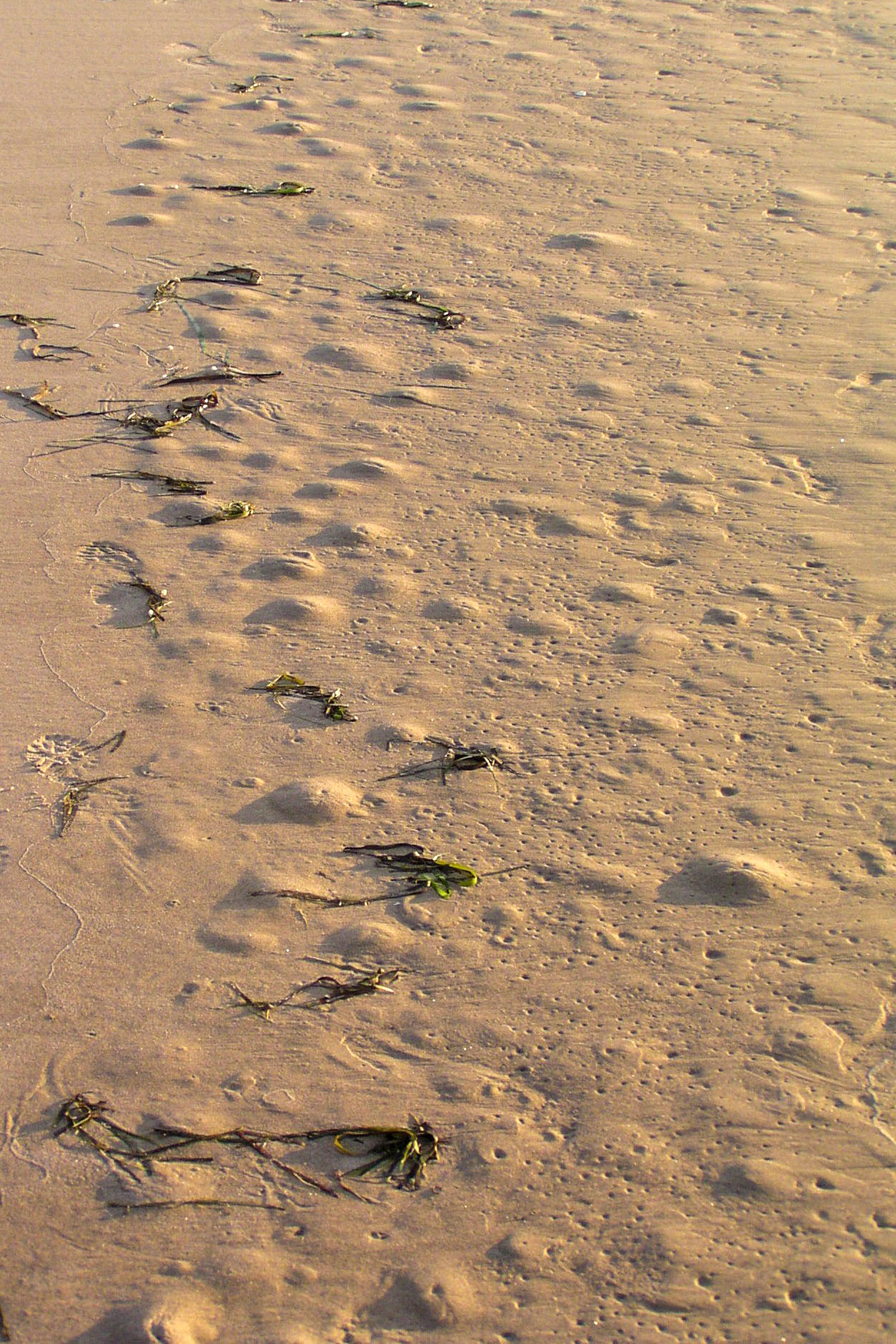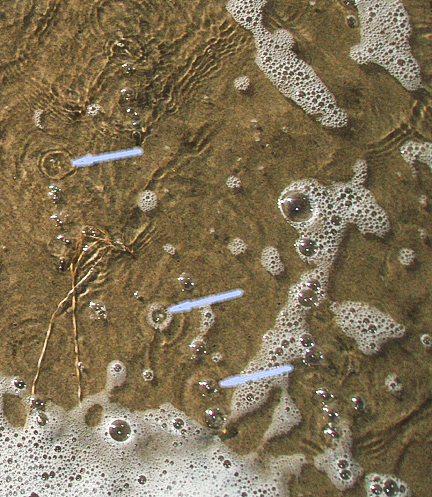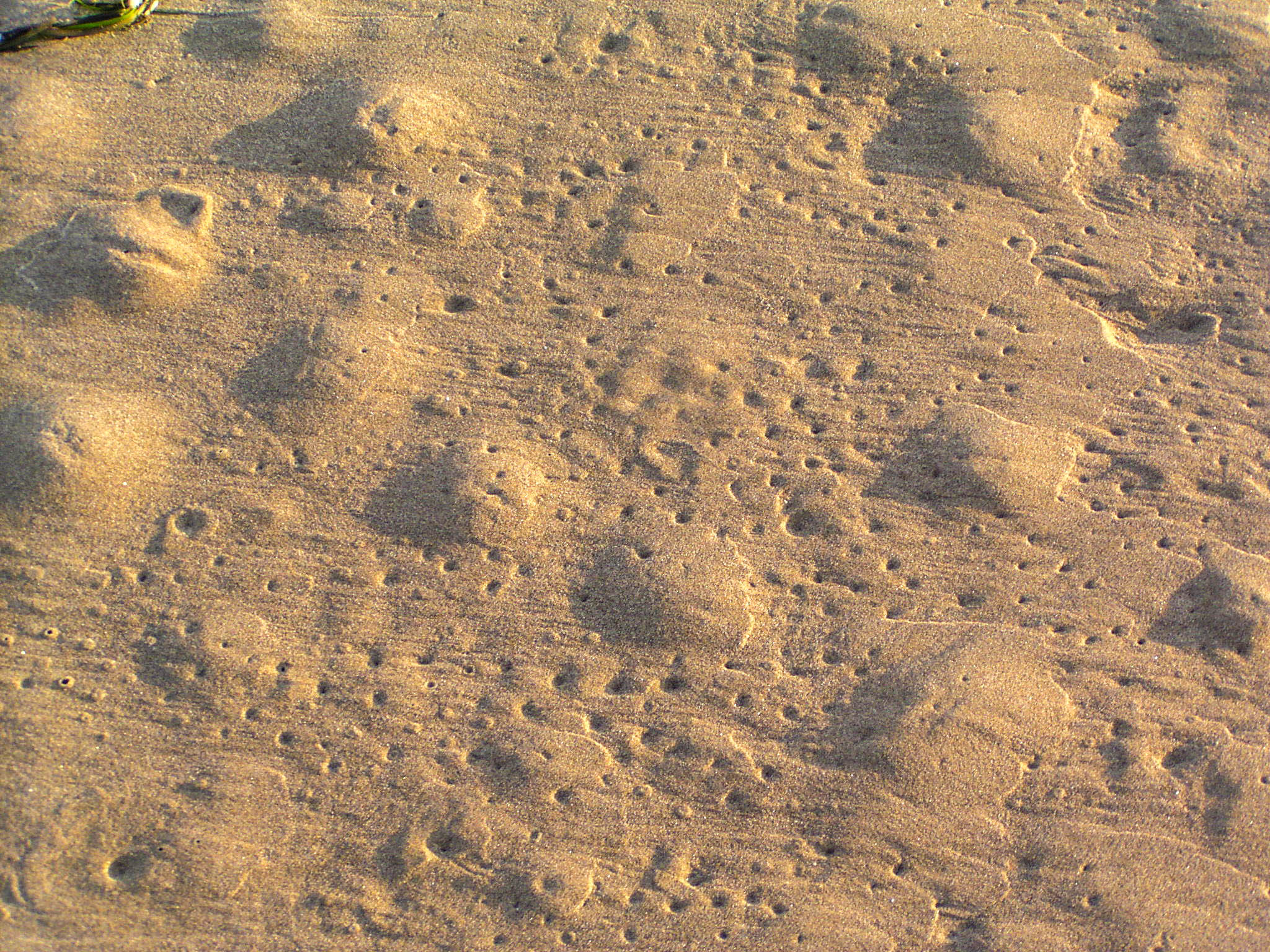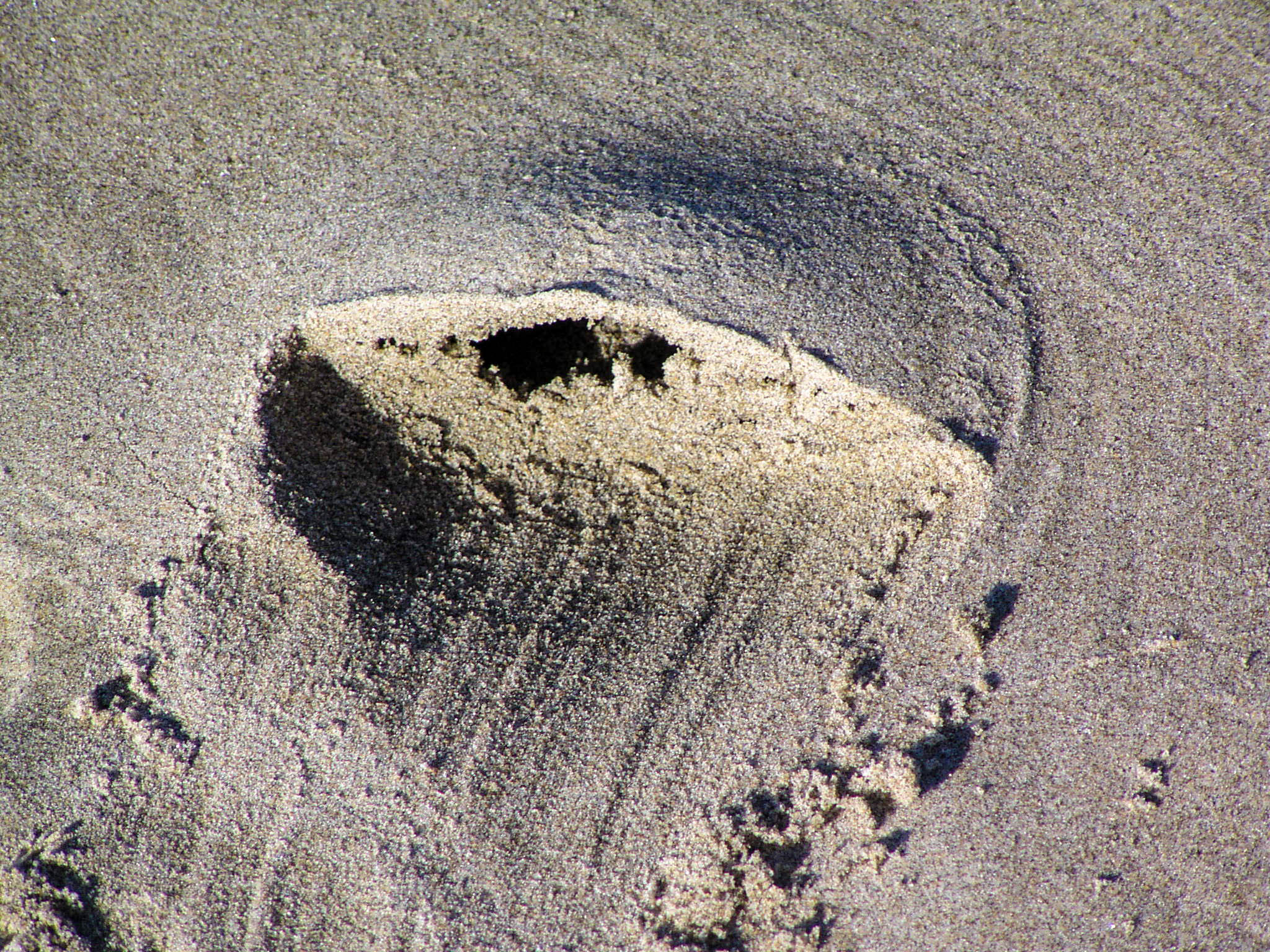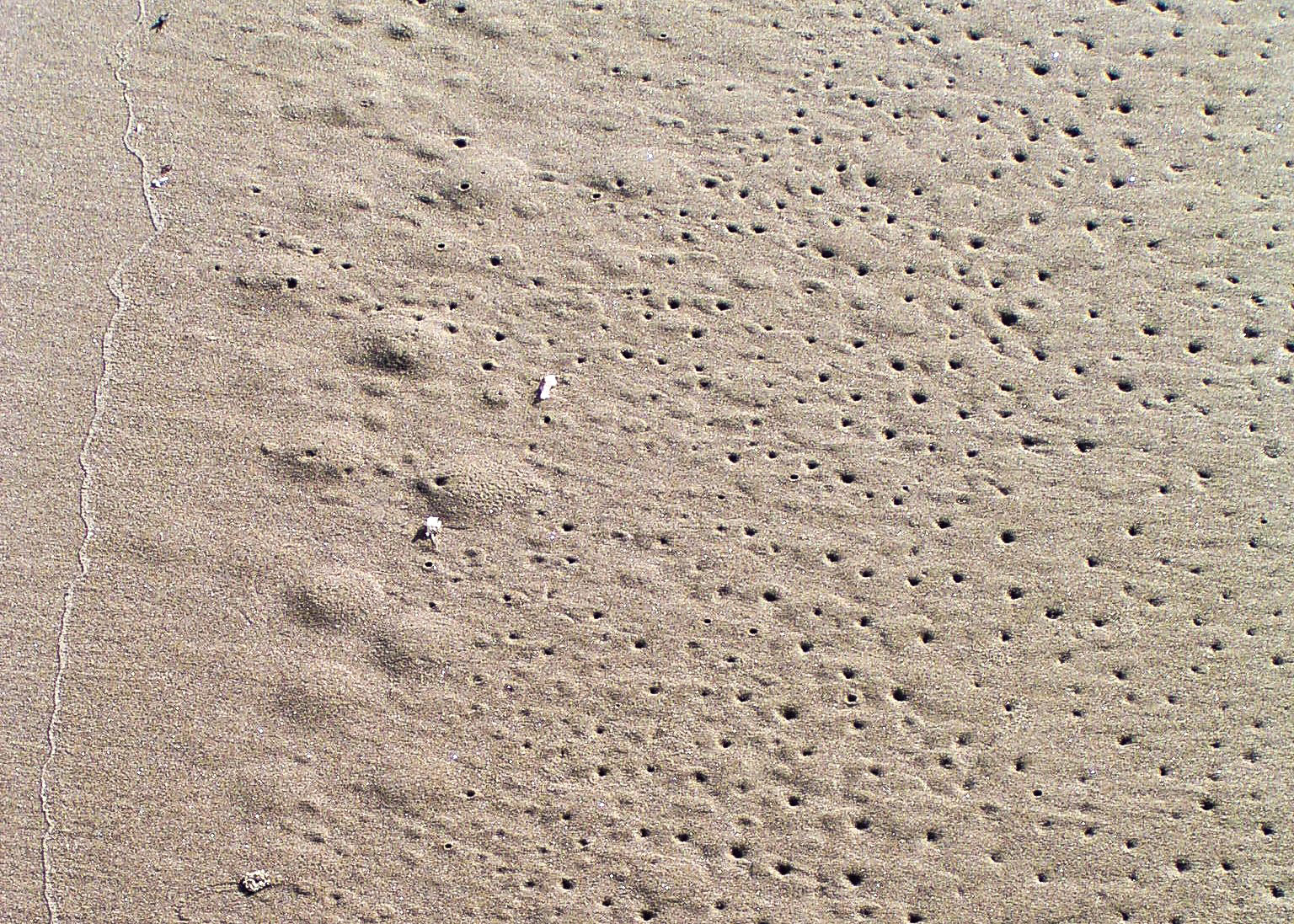When you walk along the sandy beach and watch the waves flow onto dry sand during an incoming tide, you may notice hundreds of small round holes form as the wave recedes. Along with the holes, small mounds of sand several centimeters across are left as the wave sides back to the sea. You might wonder if something is living in all these holes and mounds, and if you are really curious, you may scoop out some of the sand, sift in through a fine-mesh screen to capture any critters, and find --- nothing!
So what is making all these holes and mounds? It’s air! Dry (or damp) sand has air trapped among the grains. The grains, though they touch each other, are irregularly shaped. Where there is no contact, they leave spaces filled with air. As the water spreads over the sand, it seeps down through the grains, forcing the trapped air to percolate upward. The air starts out as small bubbles which coalesce as they come in contact with one another, creating larger bubbles as they work their way upward. These larger bubbles forge a pathway to the sand surface. If you look closely just behind the leading edge of the wave where the water is only a couple of centimeters deep, you will see bubbles emerging from the holes (center right - arrows).
What about the mounds? They are formed simply by large bubbles of air that have collected under the sand, lifting it but not breaking though the surface. If you dissect one of these mounds, you will find a lens-shaped air cavity a centimeter or two under the surface that has lifted the sand into the shape of the mound (bottom right).
Text and Photographs by Jim Young
Oceanside, Oregon

